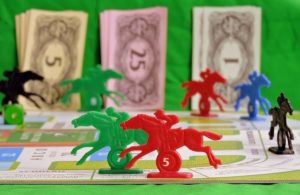What are the different grades of racecourse?
 In Britain, unlike the hotel rating system, the grading system for racecourses does not involve annual inspections or assessment of cleanliness, facilities, hospitality and so on. Each British racecourse is simpled graded 1, 2, 3 or 4, according to the amount of money it receives, annually, from the Horserace Betting Levy Board (HBLB). The HBLB, as the name suggests, collects 10% of bookmakers’ gross annual profits, above £500,000, as the Horserace Betting Levy.
In Britain, unlike the hotel rating system, the grading system for racecourses does not involve annual inspections or assessment of cleanliness, facilities, hospitality and so on. Each British racecourse is simpled graded 1, 2, 3 or 4, according to the amount of money it receives, annually, from the Horserace Betting Levy Board (HBLB). The HBLB, as the name suggests, collects 10% of bookmakers’ gross annual profits, above £500,000, as the Horserace Betting Levy.
Depending on the amount of prize money contributed by the racecourse executive and the amount of betting turnover generated, off-course, over a rolling three-year period, each racecourse receives an annual grant from the HBLB. This General Prize Fund (GPF) grant, is what ultimately determines the grading of the racecourse. Grade One racecourses, such as Ascot, Newmarket, Aintree and Cheltenham, stage the most valuable, prestigious races of the season. At the other end of the scale, Grade Four racecourses, such as Brighton, Chepstow, Hamilton and Redcar, offer meagre fare, in terms of prize money, but nonetheless competitive racing, in a relaxed environment at affordable prices.
 Desert Orchid was an immensely popular grey – in fact, towards the end of his career, almost white – horse, who won 34 of his 70 starts over hurdles and fences and remains the sixth highest-rated steeplechaser in the history of Timeform. He was trained, throughout his career, by David Elsworth, who first took out a training licence in his own right in 1978. At the peak of his powers, Elsworth had 143 horses in his yard at Whitsbury Manor Stables, near Fordingbridge, Hampshire.
Desert Orchid was an immensely popular grey – in fact, towards the end of his career, almost white – horse, who won 34 of his 70 starts over hurdles and fences and remains the sixth highest-rated steeplechaser in the history of Timeform. He was trained, throughout his career, by David Elsworth, who first took out a training licence in his own right in 1978. At the peak of his powers, Elsworth had 143 horses in his yard at Whitsbury Manor Stables, near Fordingbridge, Hampshire.